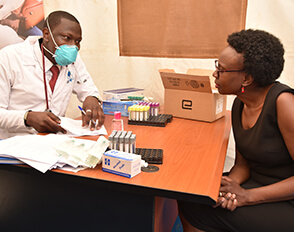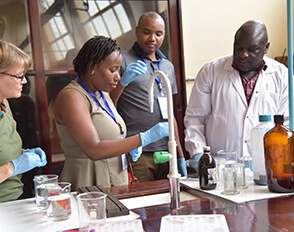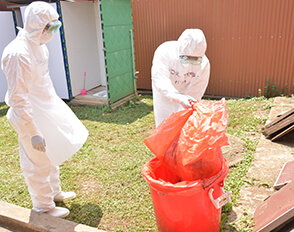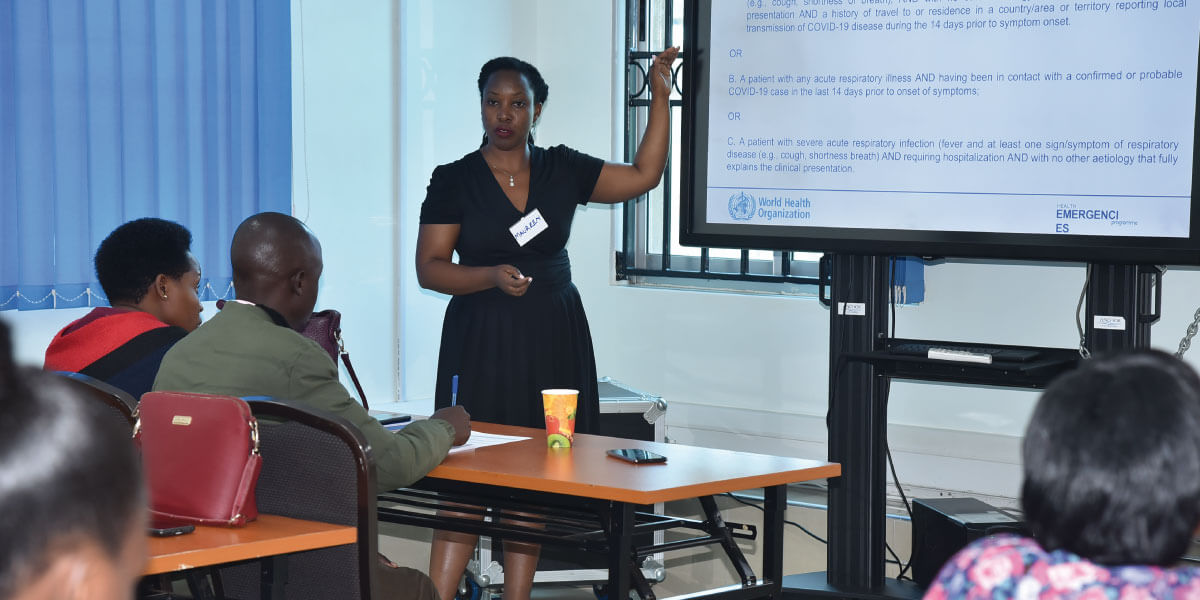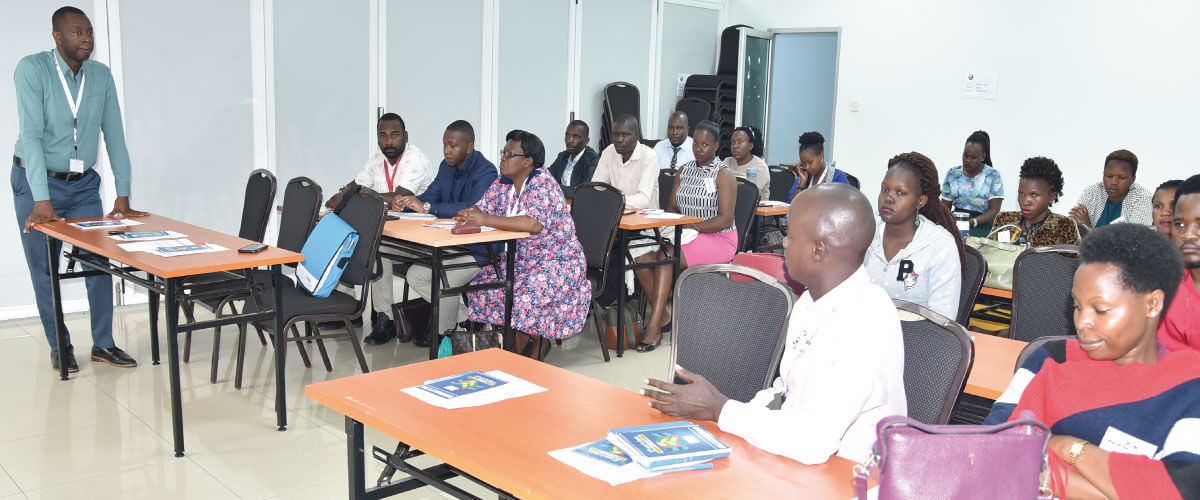
IDI Voluntary Male Circumcision Training covers preparation for COVID-19
The Infectious Diseases Institute (IDI) Global Health Security Programme (GHSP) and Health Systems Strengthening E-AMAKA project organized a three-day Infection Prevention and Control training for 20 Voluntary Medical Male Circumcisers (VMMCs). The training took place at the IDI-McKinnell Knowledge Centre, Makerere University from 3rd to 5th March 2020.
The training was aimed at increasing institutional capacity as well as making the VMMCs better equipped to handle individual cases. VMMCs by the nature of their work interact with many people while training workers in other facilities on circumcision and are therefore able to act quickly in the event of an outbreak.
The main facilitators of the training were Dr Mohammed Lamorde, Head of GHSP and Dr Maureen Kesande, the Project Officer for Infection Prevention and Control in GHSP. So far similar trainings have taken place at Entebbe General Hospital and at the Naguru China-Uganda Friendship Hospital.
The training was an avenue for the teams of IDI Wakiso and Kampala to get to know each other and share best practices, learning the different causes of respiratory tract infections, outbreak management, quarantine criteria for infectious diseases, steps of sterilization and decontamination (for both reusable and disposable kits) and new ideas around personal protective equipment. The training mainly covered Ebola and Coronavirus Disease (COVID-19) as infectious diseases.
“This is the first Coronavirus with an infection rate this high, threatening over a million to a billion people,” Dr. Larmode said. He also went ahead and explained that there are 7,500 cases reported in Italy, which figure kept growing, with the virus highlighted in a few countries such as South Africa and Nigeria.
Dr Kesande advised the trainees on how to deal with outbreaks and listed different pillars to guide them. These included a coordination pillar to link all outbreaks in the country, a surveillance pillar that is supposed to give you the epidemiology and where the outbreak is going, the Case management pillar, pillar of psychosocial support, and finally the Risk communication pillar.
By Winfred Nyapendi



